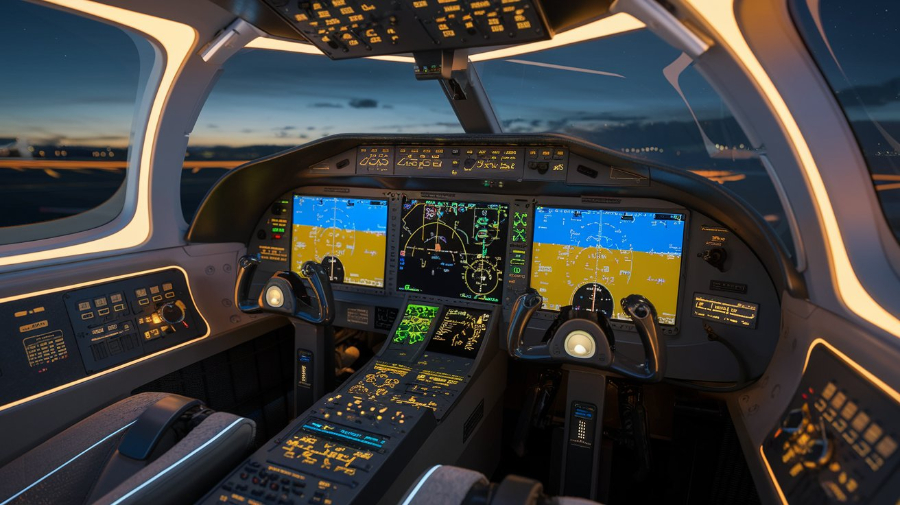The global Simulators Market was valued at USD 18.5 billion in 2023 and is forecasted to reach USD 26.1 billion by 2028, growing at a Compound Annual Growth Rate (CAGR) of 7.1%. The primary drivers of this growth include the increasing demand for realistic training environments, especially in aviation and automotive sectors, driven by safety regulations and the need for cost-effective training solutions. Emerging technologies such as augmented reality (AR) and high-fidelity simulations are enhancing training efficiency, making them indispensable across industries that prioritize safety and skill development.
Key Drivers: Cost-Effective and Safe Training Solutions
Simulators offer a cost-effective and safe method of training, especially in sectors like aviation, where regulations from authorities like the FAA and EASA require extensive pilot training. Flight simulators allow pilots to practice complex scenarios and emergency maneuvers in a risk-free environment. This eliminates the need for expensive aircraft, while reducing environmental impact. Simulators can operate for over 20 hours a day, offering a low-emission and low-cost alternative to real-world training. The military, particularly the Air Force, also heavily relies on simulators for training purposes, including battlefield scenarios.

Simulators Industry
In a broader sense, simulator-based training provides a controlled setting where trainees can practice without the risks of real-world situations. The immersive and realistic environments help enhance situational awareness and decision-making skills, preparing users for real-life challenges.
You Can Download Our PDF Brochure: https://www.marketsandmarkets.com/pdfdownloadNew.asp?id=55451533
Restraints: High Costs of Simulators
The high cost of acquiring simulators is a significant challenge for sectors like gaming, automobile, and driving simulators. Training institutions, such as driving schools, often face budget constraints, making it difficult to invest in advanced simulators. The maintenance and software updates required to keep simulators operational can strain budgets, particularly for small and medium-sized enterprises (SMEs). For gaming and entertainment sectors, high costs may deter wider adoption of simulator technologies.
Opportunities: Technological Advancements in VR and AI
Advancements in graphics, virtual reality (VR), and artificial intelligence (AI) are creating new opportunities in the Simulators Industry. These technologies are particularly valuable for creating immersive training environments in sectors like medical training, flight simulations, and entertainment. AI algorithms can create adaptive, dynamic scenarios that respond to user actions, enhancing the realism of simulations. Haptic feedback technology is also improving, allowing users to physically interact with virtual environments. The gaming and entertainment industries are already leveraging these advancements to offer more immersive experiences.
Maxar Technologies recently launched SYNTH3D, a high-performance 3D representation of the planet for use in gaming, simulation, VR, and smart cities, highlighting the expanding role of simulators in diverse industries.
Challenges: Regulatory Approvals and Development Timelines
Developing accurate simulator models, particularly in the aviation sector, is a time-consuming process. Gaining approval from Original Equipment Manufacturers (OEMs) is a necessary step that can further prolong development timelines and inflate costs. The need to meet stringent regulatory requirements adds another layer of complexity, especially when creating customer-centric products adaptable to evolving training needs. This can lead to delays in delivering new simulators to the market.
Market Segmentation and Key Trends
The Simulators Market is divided into several segments, including product solutions, services, and platform types. The product solution segment is seeing significant growth, driven by advancements in VR and AR technologies, particularly in the aerospace and automotive industries. On the platform side, the maritime segment is expected to grow at the highest rate, spurred by the need for advanced training environments that enhance maritime safety.
In terms of specific technologies, full mission bridge simulators are gaining traction due to their use in maritime and aviation training. These simulators provide immersive training environments that comply with stringent safety standards while offering cost-effective solutions.
The military training segment remains the largest in the simulator market. Geopolitical tensions and modern warfare’s evolving nature have increased the demand for sophisticated military simulation technologies. These simulators allow for the training of military personnel in complex scenarios, including cyber warfare, without the need for live exercises.
To Gain Deeper Insights Into This Dynamic Market, Speak to Our Analyst Here: https://www.marketsandmarkets.com/speaktoanalystNew.asp?id=55451533
Regional Insights: North America Leads the Market
North America is projected to dominate the global simulators market, accounting for over 33% of the market share from 2023 to 2028. The region’s leadership can be attributed to the rising demand for advanced simulation technologies in sectors such as aviation, defense, and healthcare. Technological advancements in VR and AR have significantly contributed to the market’s growth by offering more immersive and effective training environments. In addition, substantial investments in research and development are pushing the boundaries of what simulators can achieve.
Emerging Industry Trends and Technologies
Key trends shaping the simulators market include standalone bridge simulation consoles like Flexicon, which offer realistic, immersive training environments. These consoles are equipped with real ship controls and navigation systems and are increasingly being adopted for maritime training. Furthermore, advancements in 5G and extended reality are expected to disrupt the market by enabling more sophisticated and connected training environments.
Key Players and Recent Developments
Major Players in the simulators market include CAE, Inc. (Canada), L3Harris Technologies, Inc. (US), Saab AB (Sweden), Thales (France), and Indra Sistemas S.A. (Spain). These companies are driving innovation in the market through various contracts and agreements. For example, in May 2023, CAE Inc. secured a contract to support Flight School Training Support Services at Fort Novosel in Alabama, highlighting the growing role of simulators in military training. Similarly, Thales acquired a fully equipped AW139 Full Flight Simulator, which will serve as a hub for advanced helicopter training in the North Atlantic.
A Bright Future for the Simulators Market
The simulators market is poised for sustained growth, driven by technological advancements and the increasing need for cost-effective, safe training solutions across multiple industries. As VR, AR, AI, and other emerging technologies continue to evolve, the market is expected to expand further, offering more realistic and immersive training environments for sectors ranging from aviation to healthcare. North America, in particular, will continue to be a key player, supported by strong investments in innovation and research.
